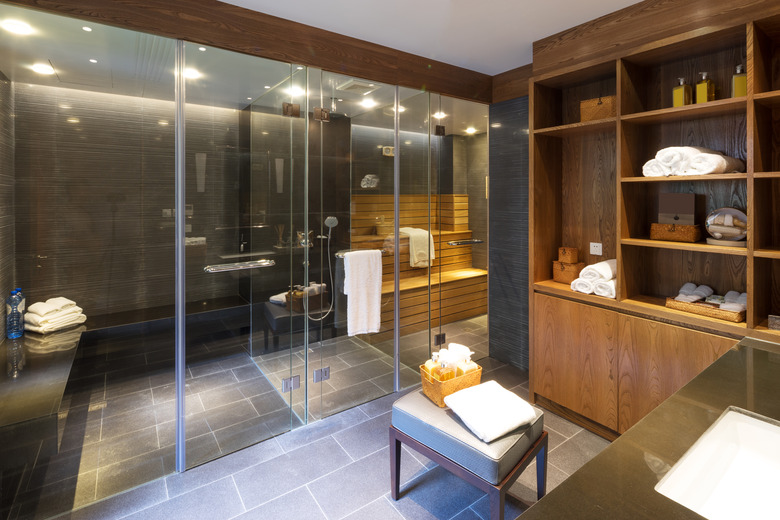How To Convert A Shower Into A Steam Room
We may receive a commission on purchases made from links.
Steam showers are becoming more and more popular as homeowners look to move comfort and luxury into their own bathrooms. Luckily, you can convert most standard bath and shower stall setups into a steam room with a bit of work and investment. Keep in mind that if you have a bathtub-type setup, you will need to convert it to a stall as you add the steam spa equipment.
Advantages of Steam Showers
Advantages of Steam Showers
These kinds of showers work by generating steam into the fixed area of a shower stall, providing a steam sauna or spa-type experience along with the typical showerhead. Typically, a user sits in the steam room for a period of time and then cleans up with a quick shower in the steamy enclosure.
Here are a few benefits of regularly using a steam room:
- Relaxation
- Skin improvements
- Improved
sleep quality
Adding a steam shower in your home may also increase its resale value.
Choosing a Steam Generator
Choosing a Steam Generator
First, you'll want to purchase and install the steam generator. Note that this involves working with electricity; you absolutely must turn off power at the circuit breaker before getting started. To be on the safe side, you should also turn off water to the shower at the source before you begin.
Choose a steam generator based on the size of the stall and the expected usage. Usually, the steam unit is installed just outside the shower wall, but depending on the unit, it can be installed inside the stall under a bench as long as it's waterproof.
The steam generator will need to be connected to the water line as well as electricity coming from its own breaker; it will also need to vent to the outside of the house. Take care with installation and choose a location that will have good access for future maintenance. The generator may require extra support or even a shelf.
Connections and Electrical Setup for a Steam Shower
Connections and Electrical Setup for a Steam Shower
Next, line out the appropriate connections. The manufacturer's manual for the steam unit you've chosen will include details such as the distance the steam nozzle should be from the floor of the shower, where access holes need to be installed and how to arrange the piping and tubing for the generator you've chosen.
Next, you'll need to connect the electrical pieces. Make sure all power has been turned off to the area at the breaker before doing any electrical work. Most steam units require their own breaker; the manufacturer's information will let you know what size is required. If you have experience performing electrical work like this, it may be OK to proceed; however, if you are at all unsure about what to do, you should contact a licensed electrician for help.
In addition, plan out where the control panel will be installed. Some steam units have wireless control units, but in most cases, the control panel should be installed on the same wall as the showerhead. Once the location of the control panel has been decided, make the required electrical connections between the unit and the controller.
Shower Door Modification
Shower Door Modification
Once connections have been made, the last step is modification of the shower door so that it contains a vent panel. Some standard shower doors come with a vent panel, but most often, this can require custom modification. Unless you have detailed knowledge on how to do so, it's best to call a professional to work on the door to avoid damage.
Once everything has been installed, seal the gaps between surfaces with appropriate shower caulk and allow it sufficient time to dry before using the steam generator. Start the unit for a test run to make sure it's working appropriately and at a reasonable steam level. Once everything's done and dry, enjoy the luxury of your new steam room.
